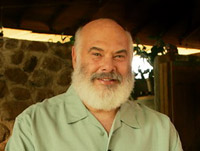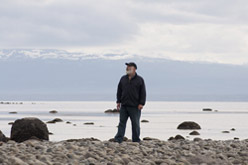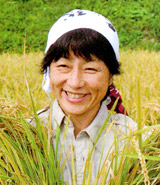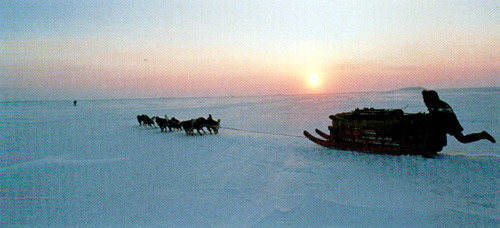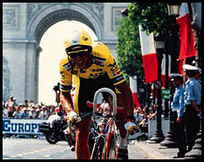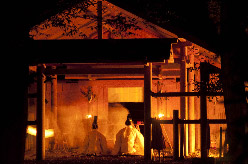
|
HOME > Gaia Symphony Official Guide > No.7 No.1 | No.2 | No.3 | No.4 | No.5 | No.6 | No.7 | No.8 | No.9 |
|||
| Gaia Symphony No.7 |
|||
| For all organisms to continue to live and thrive graciously and wholesomely | |||
|
Inner peace to accept what cannot be changed
Jin Tatsumura |
|||
Dr. Weil graduated from Harvard University and now serves as Director for the Arizona Center for Integrative Medicine, which is a program at the University of Arizona. He is the foremost leader in advocating Integrative Medicine, which merges ancient and traditional medicines from regions around the world with the modern Western Allopathic medicine. He is also a world-renowned author having written best selling books such as Health and Healing and Spontaneous Healing. The principle of life forms’ natural ability to heal has been spread throughout the world thanks to his practices and research. He visited Japan for the first time as an exchange student at the age of 17. There he was introduced to Japan’s culture and way of admiring nature and respecting life. To this day he is a fan of the Japanese and enjoys Matcha tea every day. His favorite book as a young boy was the Japanese children’s story “Momotaro (Peach Boy)”, as his mother read the story for him at bedtime every night. While studying at the Harvard Medical University he strongly felt the limitation of modern western medicine. Disillusioned with his studies, he traveled to the heart of the Amazon and other remote areas around the world to begin his field work in Shamanism and herbal medicine. In 1996 Dr. Weil’s book Spontaneous Healing hit No.1 on the NY Times bestseller list and he was featured on Time Magazine’s cover as one of the top 25 most influential people in the U.S. His life experience and wisdom reaches beyond the medical field. In contemplating about the heart of GAIA, he is certainly one who can provide suggestions worth contemplating. Currently he divides his time living in the Arizona desert and on a small island in British Columbia, Canada. He continues to make an effort to leading an ideal lifestyle respecting the Heart of GAIA in his two homes. While he busies himself with various activities, he advocates graceful aging through his new book “Healthy Aging”. [Film Locations] United States – His ranch home in the desert outside of Tucson, His teaching at Arizona University’s Center for Integrative Medicine
|
|||
| |||
After receiving a Graduate degree in Political Science from Waseda University and through her career as a reporter for an English newspaper, she earned her Masters degree in Environmentology from Cambridge University and Ph. D. in Education at Edingburgh University. Takako participated in many adventures such as a 1500km canoe descent on the Amazon River and crossing of the Bering Strait by ski. In 1995, she became the first Japanese woman in an international team of two women and three men to cross the Arctic Ocean by using dogsled and human power only. During this trip, despite many life-threatening encounters, she continued to send her electronic travelogue to children through out the world by catching the signal of the satellite which appeared on the horizon for a mere five minutes a day. This experience strengthened her conviction as an environmental educationalist. She embodies the feminine gentleness and strength. Takako lived among the elderly indigenous people on the small islands in the South Pacific and in the Alaskan and Canadian Arctic. Through this experience, she observed the special wisdom these tribal members possessed that allowed them to live in harmony with nature. She now devotes her time to finding better ways to passing down this wisdom to the next generation. She recently began an educational project in her hometown of Minami-Uonuma in Niigata, called “Tappo”. This project allows children to experience farming a rice field in the traditional Japanese way with the aim to teach how to be connected to the earth. She has published such books as “Outdoors Change Children” and “In the World of Whiteout”. For Gaia Symphony 4, she provided support in the filming of Dr. James Love lock and Dr. Jane Goodall during her study abroad in the U.K. [Film Locations] Japan – Educating Japanese children in Niigata on rice farming and living in deep snow. Greenland – Global educational activity as a leader of BSES. Mother Nature in global scale.
| |||
| |||
Over the course of 21 days cyclists race through nearly 2500 miles of mountains and valleys of the European Alps, at times reaching 9,800 feet in elevation. It is for this reason that Tour de France is said to be the most intense competition of all the sporting events in the world. Naturally, the winner of this race becomes an overnight hero for all of Europe. Greg Lemond is the first non-European cyclist to become the champion of the Tour de France in 1986. While enjoying being at the top of his game both in popular support and athletic conditioning, in 1987 he was shot by a shotgun and nearly died as a result of a hunting accident. While most believed it impossible to recover from such a blow, he returned to the Tour de France in 1989 with over 37 shotgun pellets still buried in his body. On the last day of the race, he caught up to France’s hero Laurent Fignon, who was ahead of Lemond by 50 seconds, and won the race by 8 seconds – the narrowest margin of victory ever in the Tour de France’s 87-year history. The miraculous performance by Lemond is still hailed as one of the most memorable highlights in the history of Tour de France. Lemond today is calm and kind, more reminiscent of a philosopher rather than a serious athlete with such an extreme history of triumph and success. He is deeply interested in Japan’s spiritual culture and exploring the technology used in traditional Japanese arts and crafts. He plans to visit Japan with his younger son, who is interested in Japanese culture. Greg and his 21-year-old son Scott are scheduled to travel around sacred spots in the central Japanese mountains by bicycle and meet with masters of traditional arts and crafts. We will join Lemond on this bicycle tour and discuss the relationship between the human body and spirit, the healing power of the human body, competition verses coexistence, team versus individual, the relationship between the 21st century human and bicycles, and parent-child relationships. We also look forward to meeting with Japanese bicycle enthusiasts while on the journey. [Film locations] Kii peninsula, Old Kumano Road, Holy places around the mountains of central Japan, Hot Springs, Nara, Kyoto, Visiting Masters of Japanese art, Budoh, Sadoh (tea ceremony), Noh and Zen.
| |||

Ancient Spiritual Rituals Simple yet dignified, the spiritual practices of Japanese Shinto reveals its beauty in its various rituals. Behind the beautiful form of these customs is a certain outlook toward nature that Japan inherited and refined since the Johmon period thousands of years ago. This outlook on nature speaks of how within each natural phenomenon there are a myriad of Gods (Yaoyorozu-no-kami) which are the embodiment of universal intelligence. The human life is sustained thanks to this universal intelligence. This way of thinking resembles the Gaia Theory, which advocates that Gaia - our mother earth - is one whole living organism and that we humans are part of that organism that depend on and are nurtured by her. In this 7th episode of the Gaia Symphony, we take a look at the beautiful Shinto rituals in the hopes of resurrecting Japan’s traditional outlook on nature. Over 5000 years ago, our Japanese ancestors formed the origins of Shinto out of their respect and gratitude towards nature’s invisible power. The ancient rituals from that time still live in some of today’s Shinto ceremonies; paying homage to the fire god using a single fire-stone on the holy mountain top at midnight, or scooping the first drop of holy waters that bubble up from the earth in a deep valley. An ancient tree may be used as center stage for a festival, or in another ceremony the clergy will be in prayer while extracting the holy trees used in bonfires and worship. These ceremonies show how our ancestors respected, worshipped and cared for the five elements of nature - wood, fire, earth, metal and water – as a portal to the divine. As time passed, cultivation arrived in Japan and the country was united under one emperor. The formalities of Shinto ceremonies were refined and became more graceful while still preserving the original spirit. Today we can see the supreme beauty in the ceremonies of Ise Shrine. In Gaia No. 7, by revealing the splendor of Shinto we wish to resurrect the ancient wisdom that we are sustained by universal intelligence. We believe that this experience of our lives “being lived” by a greater power is the origin of spirituality. [Film Locations] Shinto Shrines and ceremonies all around Japan The total solar eclipse in Amami-Oshima on July 22nd
| |||
| |||
Copyright Jin Tatsumura Office |

